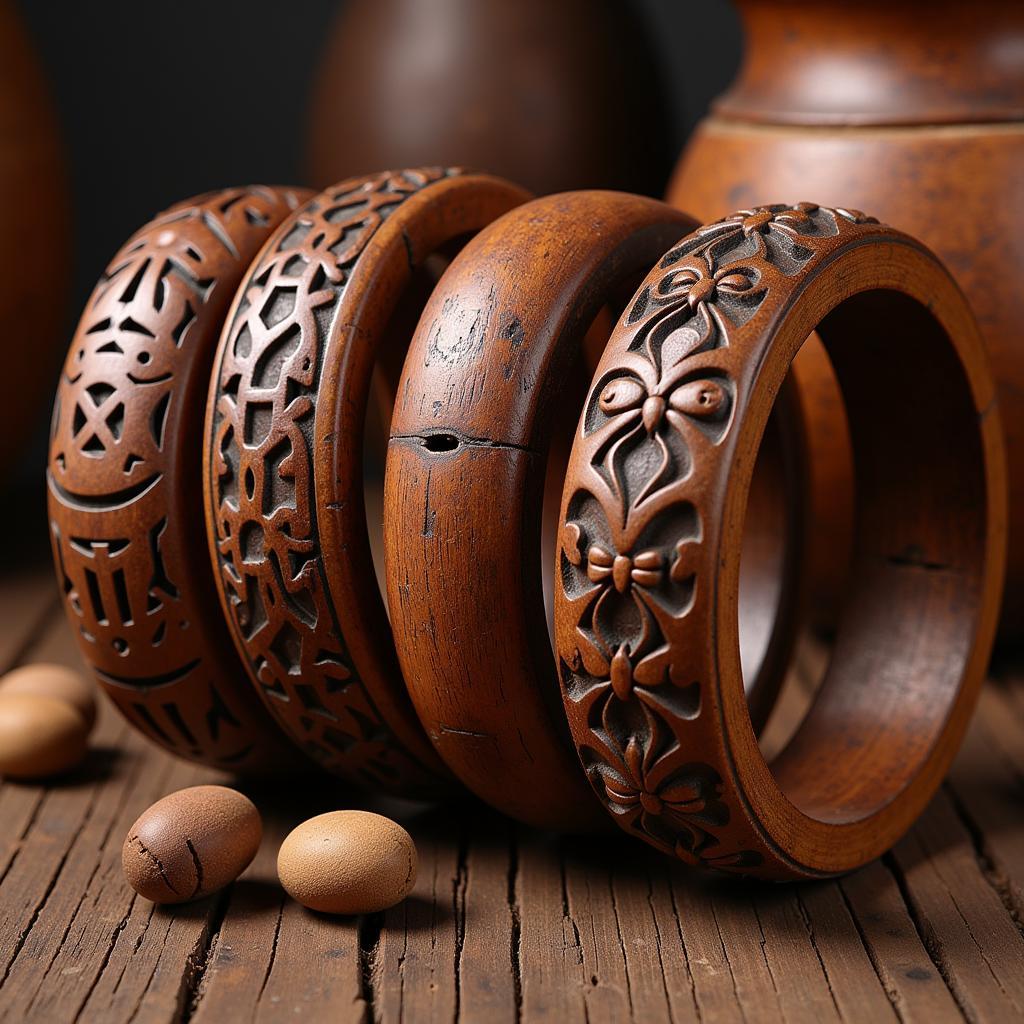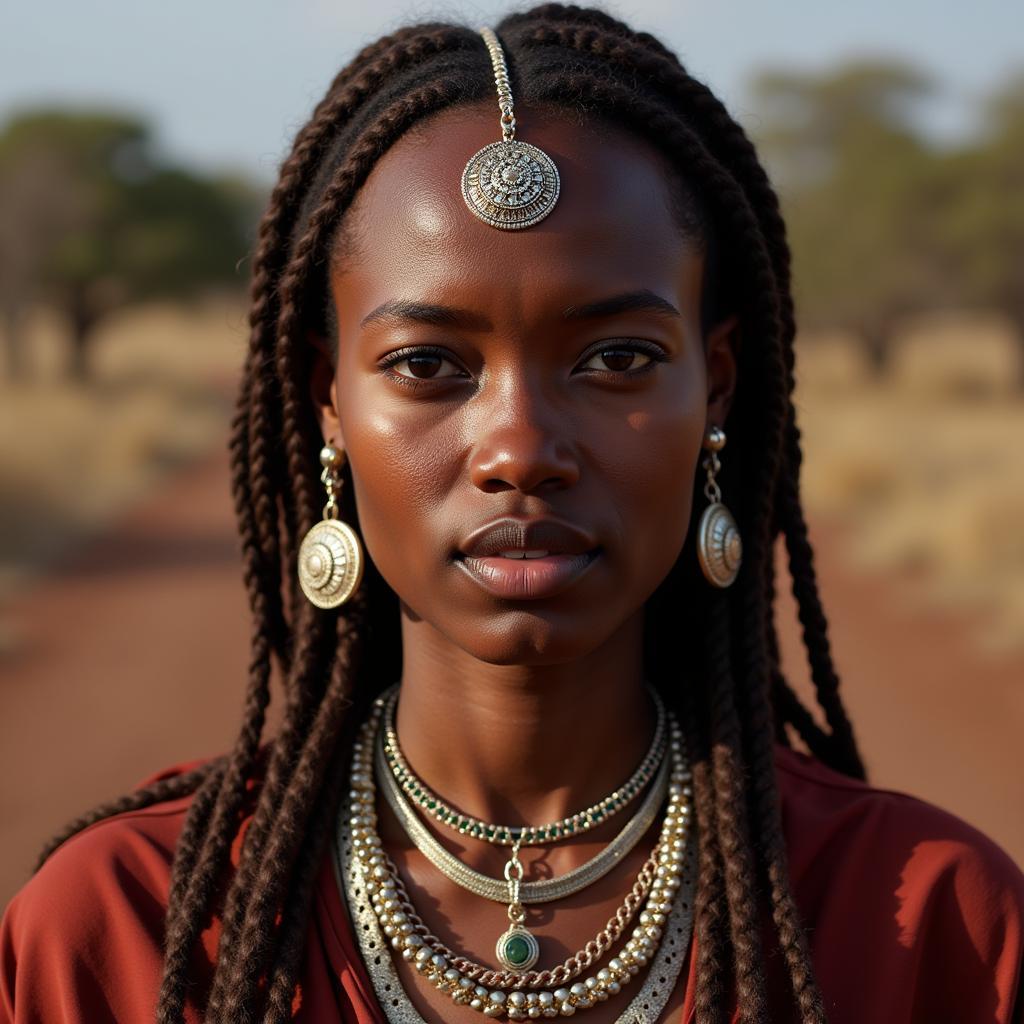African Culture Jewelry: A Journey Through Tradition and Adornment
African Culture Jewelry is more than just a decorative element; it’s a powerful form of storytelling, a symbol of heritage, and a reflection of the diverse cultures found across the African continent. From the intricate beadwork of the Maasai to the bold gold designs of the Ashanti, each piece of jewelry carries a unique cultural significance and tells a story of tradition, belief, and identity.
The Language of Beads: Unraveling the Stories Behind African Beadwork
Beads have been an integral part of African adornment for centuries, their vibrant colors and intricate patterns weaving tales of social status, marital status, and even spiritual beliefs. In many cultures, specific colors and arrangements of beads convey specific meanings. For example, red beads, often associated with bravery and strength, might be worn by warriors, while white beads, symbolizing purity and peace, might adorn a young bride.
Beyond Beads: Exploring the Diversity of Materials in African Jewelry
While beads hold a prominent place in African jewelry, the continent boasts a rich tapestry of materials used in crafting these adornments. From locally sourced materials like wood, bone, and clay to precious metals like gold and silver, each material carries its own cultural significance and adds a unique aesthetic to the jewelry.  African wooden bangles The Ashanti people of Ghana, for example, are renowned for their intricate gold jewelry, a testament to their rich goldsmithing traditions and the metal’s cultural importance as a symbol of royalty and power.
African wooden bangles The Ashanti people of Ghana, for example, are renowned for their intricate gold jewelry, a testament to their rich goldsmithing traditions and the metal’s cultural importance as a symbol of royalty and power.
The Cultural Significance of African Jewelry: More Than Just Adornment
African culture jewelry is not merely an aesthetic choice; it’s an integral part of cultural identity, social structure, and spiritual beliefs.  African tribal jewelry Pieces are often passed down through generations, becoming cherished heirlooms imbued with ancestral energy and carrying the weight of family history. In some cultures, specific pieces of jewelry are worn during rituals and ceremonies, acting as tangible connections to the spiritual realm and ancestral spirits.
African tribal jewelry Pieces are often passed down through generations, becoming cherished heirlooms imbued with ancestral energy and carrying the weight of family history. In some cultures, specific pieces of jewelry are worn during rituals and ceremonies, acting as tangible connections to the spiritual realm and ancestral spirits.
African Jewelry in the Modern World: Tradition Meets Contemporary Design
Today, African culture jewelry continues to evolve, with contemporary designers drawing inspiration from traditional motifs and techniques while incorporating modern aesthetics and materials. This fusion of old and new has brought African jewelry to the global stage, where it’s celebrated for its unique beauty, cultural richness, and the stories it tells. From runways to everyday wear, African jewelry continues to captivate the world with its vibrant spirit and timeless appeal.
Conclusion
Exploring the world of African culture jewelry is a journey through the heart of the continent’s diverse cultures, traditions, and artistry. Each piece, whether a simple beaded bracelet or an elaborate gold necklace, speaks volumes about the people who created and wore it, offering a glimpse into their beliefs, values, and aesthetic sensibilities. By appreciating the craftsmanship and understanding the cultural significance behind each piece, we gain a deeper understanding and appreciation for the rich tapestry of cultures that make up the African continent.